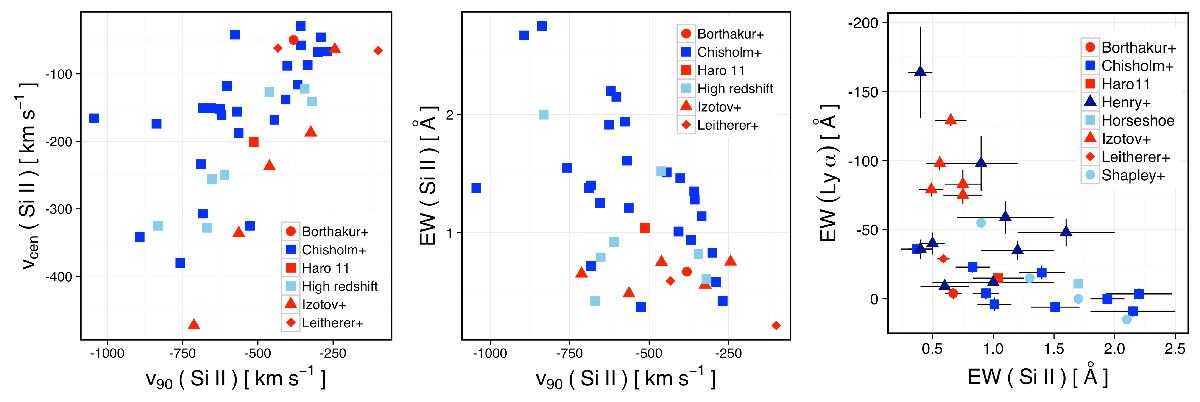Fig. 7

Two panels on the left: similar to the right two panels of Fig. 4, but include seven high redshift (z ~ 4) galaxies from Jones et al. (2013) and Leethochawalit et al. (2016) in light blue. These seven high redshift galaxies are LyC candidates from their small Si ii covering fractions, and they have similar outflow properties as the control sample. Abell 2390 H5b is an intriguing candidate because it has a lower v90/vcen ratio (2.0) and low Si ii equivalent width. Right panel: comparison of the Lyα equivalent width to the Si ii equivalent width. Plotted as light blue circles are points from Shapley et al. (2003) who stacked z ~ 3 galaxies based on their Lyα equivalent widths. The low redshift galaxies encompass the Shapley et al. (2003) points, but the leakers are systematically at lower Si ii equivalent widths. Large Si ii equivalent widths correspond to low Lyα emission, while low Si ii equivalent width span a large range of Lyα emission properties. Additionally, we include the high redshift galaxy, the Cosmic Horseshoe, as a light blue square. This galaxy is not detected in LyC emission, and correspondingly has a large Si ii and small Lyα equivalent width. Here, negative equivalent widths correspond to emission features.
Current usage metrics show cumulative count of Article Views (full-text article views including HTML views, PDF and ePub downloads, according to the available data) and Abstracts Views on Vision4Press platform.
Data correspond to usage on the plateform after 2015. The current usage metrics is available 48-96 hours after online publication and is updated daily on week days.
Initial download of the metrics may take a while.


